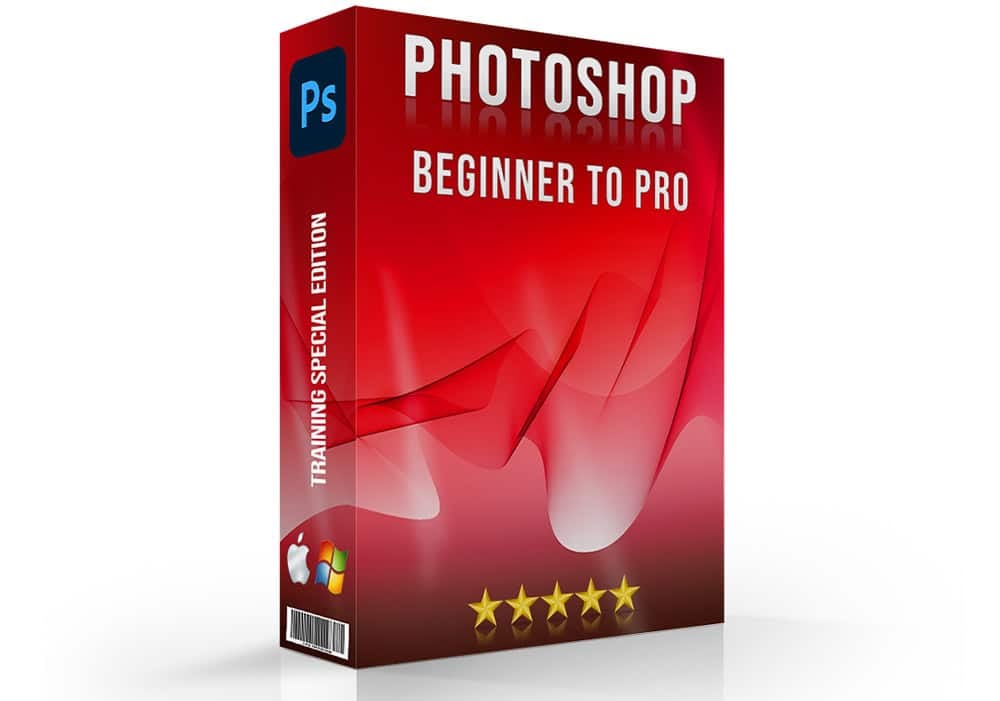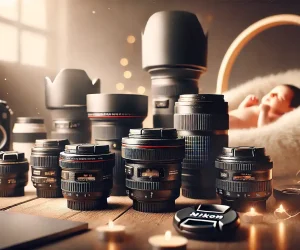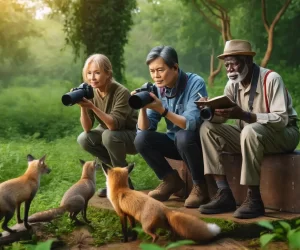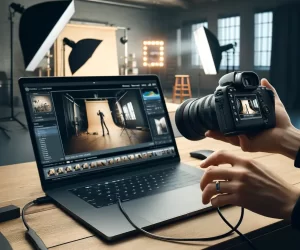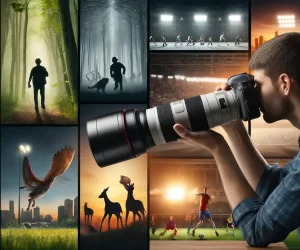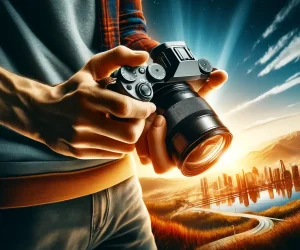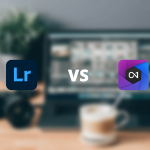
Introduction to A 35mm or 50mm Lens
Choosing the right lens types is a crucial decision for any photographer, whether you’re a beginner or a professional. 35mm or 50mm lens offer different perspectives and capabilities that can significantly impact your photography style. For instance, a 35mm lens provides a wider field of view, making it ideal for capturing more of the scene, which is perfect for landscapes and seascape photography.
On the other hand, the 50mm lens, often referred to as the “nifty fifty,” is renowned for its ability to isolate matter with a pleasing background blur, making it a favorite for portraits. The focal length of the 50mm lens closely mimics the human eye’s perspective, offering a natural and intimate feel to your photos. Let’s understand how 35mm or 50mm lens are ideal in various conditions.
Table of Contents
Benefits of Using a 35mm Lens
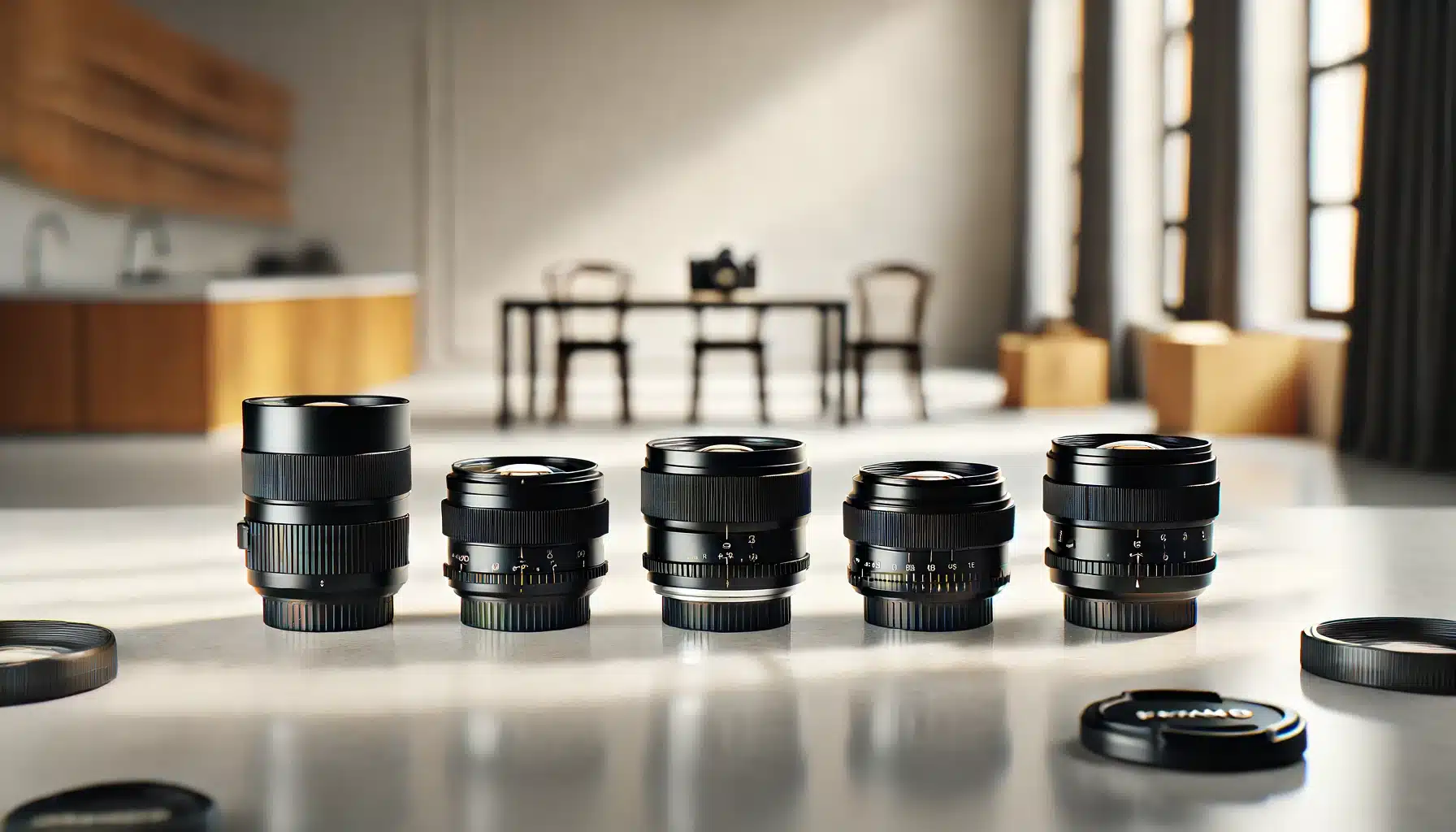
The 35mm or 50mm lens provides a natural perspective that’s pleasing to the eye. A 35mm or 50mm lens is popular choices among experts, and each has its distinct advantages. Here, we focus on the benefits of using a 35mm lens.
Versatility in Various Photography Styles
It is incredibly versatile, making it suitable for a wide range of photography styles. Whether you’re filming landscapes, street scenes, or wildlife photography, the 35mm lens allows you to shoot expansive scenes and include more context in your photographs. It is perfect for incorporating the environment and telling a story through your image files.
Excellent for Low Light Conditions
The wide aperture of many 35mm lenses allows for excellent performance in low-light conditions. This makes it an ideal choice for shooting in environments where lighting is less than perfect. The ability to let in more lighting helps maintain image standard without needing to increase ISO too much, which can introduce noise into your photographs. This feature is particularly useful when using different digital cameras with varying capabilities.
Great for Environmental Portraits
When shooting portraits, a 35mm or 50mm lens can produce stunning results. Using a 35mm lens for environmental portraits allows you to include both the object and its surroundings, providing context that enhances the story of the image. Unlike longer lenses, which tend to isolate the object, this captures more of the backdrop, making it perfect for lifestyle and travel photography.
Lightweight and Portable
35mm or 50mm lenses generally come in compact and lightweight designs, making them easy to carry around during long shoots or travel photography. This portability ensures that you can take your lens anywhere without feeling burdened by heavy gear. The 35mm lens, in particular, strikes a balance between wide-angle capabilities and manageable size, making it a favorite among experts who are always on the move.
Here are different types of cameras that have excellent 35mm frames:
| Camera Model | Price | Focal Length | Megapixels | Key Features |
|---|---|---|---|---|
| Sony RX1R III | $4,000 | f/1.4 | 61MP | AI-powered autofocus |
| Fujifilm X100V | $1,400 | 23mm (35mm equivalent) f/2 | 26.1MP | APS-C sensor, hybrid, tilting display |
| Canon EOS R5 II | $3,899 | (35mm equivalent) f/4 | 61MP | Full-frame sensor, 8K video, 30fps burst shooting |
| Fujifilm X100VI | $1,599 | (35mm equivalent) f/2 | 40MP | APS-C sensor, digital teleconverter, hybrid viewfinder |
| Nikon Z8 | $4,000 | f/1.2 | 45.7MP | 8K video, advanced autofocus |
Benefits of Using a 50mm Lens
35mm or 50mm lenses are popular choices among photographers, and each has its distinct advantages. Here, we focus on the benefits of using a 50mm lens.
Enhanced Subject Isolation
A key benefit of using a 50mm lens is its ability to create strong subject isolation, thanks to its aperture. This makes it perfect for creating beautiful bokeh, where the subject is in sharp focus and the backscene is pleasingly blurred. This effect is particularly desirable in portrait photography, making your subject stand out distinctly from the background, unlike a 35mm lens, which tends to include more environmental context.
Superior Background Compression
The 50mm lens offers better backscene compression compared to wider lenses. This means that objects in the background appear closer to the matter, creating a more intimate and dramatic effect. This compression is particularly useful when photographing in busy environments, as it helps to reduce distractions and focuses the viewer’s attention on the subject.
Minimal Distortion
One of the standout features of a 50mm lens is its minimal distortion, which provides a more accurate representation of matter. This makes it ideal for product photography and any scenario where maintaining the integrity of the matter’s shape is crucial. Wider lenses like a 35mm lens can introduce distortion, especially around the edges, which can be undesirable in certain types of photography.
Great for Detailed Close-ups
While not a macro lens, the 50mm lens excels at capturing detailed close-ups. The ability to get closer to the matter while maintaining sharpness and clarity is a significant advantage. This feature is particularly useful for food photography, product shots, and any situation where fine details matter. Unlike using a zoom lens, which might not offer the same level of sharpness, the 50mm provides impressive close-up images.
Versatile in Different Shooting Scenarios
A 50mm lens is incredibly versatile and can be used effectively in various filming scenarios, from cityscape photography to dim lighting conditions. Many photographers prefer a 35mm or 50mm lens for city photography. This versatility is a strong point when compared to specialized lenses like a telephoto lens, which are excellent for specific purposes but less flexible overall.
Here is the list of cameras with awesome 50mm lens:
| Camera Model | Price | Focal Length | Megapixels | Key Features |
|---|---|---|---|---|
| Canon RF | $2,000 | f/1.4 | N/A | High-resolution, excellent dim lighting performance |
| Nikon Z | $1,799 | f/1.2 | N/A | Full-frame, superior bokeh, fast autofocus |
| Sigma DG DN Art | $949 | f/1.4 | N/A | Impressive optics, compact design, silent focusing |
| Sony A7C R | $2,199 | f/1.2 | 61MP | Full-frame sensor, compact body, advanced AF system |
| Canon EOS R6 Mark II | $2,499 | f/1.4 | 24MP | Full-frame sensor, 4K video, in-body stabilization |
35mm or 50mm Lens: Which is Better for Street Photography?
The Case for the 35mm Lens
- Wider Perspective: The 35mm lens offers a broader sight, making it perfect for capturing the essence of cityscape photography. It allows for a more inclusive scene, which is ideal when you want to include more elements in your shot. This lens is particularly effective in urban environments where space can be limited, and it helps convey a sense of place and context. Its versatility makes it a popular choice for capturing candid moments without needing to be too distant.
- Increased Depth: The 35mm lens excels in creating visuals with a greater sense of depth. This is especially useful in silhouette photography, where you want to emphasize shapes and forms against a lighting source. The broader field of view helps in positioning elements within the scene, adding layers to your composition. It’s great for dynamic and engaging shots that tell a story within the constraints of urban settings.
The Case for the 50mm Lens
- Natural Perspective: The 50mm lens is known for its natural look, closely resembling what the human eye sees. This makes it an excellent choice for cityscape photography where you want a more focused and intimate feel. The narrower view allows you to highlight specific elements more effectively, providing a clear and uncluttered composition. This lens is perfect for those moments when you want to highlight specific details within the urban landscape.
- Cinematic Quality: The 50mm lens brings a cinematic grade to your visuals, making it ideal for capturing striking visuals in silhouette photography. Its ability to create a pleasing out-of-focus effect enhances the overall aesthetic of your photographs. This lens is particularly effective in poor lighting conditions, allowing for creative use of light and shadow, which adds a dramatic flair to your captures.
Practical Considerations
- Portability and Discretion: When considering cityscape photography, the size and weight of your gear can play a significant role. The 35mm lens is often lighter and more compact, making it easier to carry around for extended periods. Its unobtrusive size allows you to blend into the environment, capturing moments without drawing attention.
- Adaptability: Both 35mm and 50mm lenses are prime lenses, which means they have fixed focal lengths. This requires you to move physically to adjust your composition, encouraging a more interactive and thoughtful approach to photography. However, the 35mm lens offers more adaptability in tight spaces and crowded areas, while the 50mm lens excels in creating more isolated and intimate compositions.
Which Lens is Good for Night Photography?
35mm or 50mm lenses are both excellent choices for capturing night scenes, each with unique strengths that can enhance your work in poor lighting conditions.
35mm in Dark Conditions
A 35mm offers a broader scene, making it ideal for capturing the expansive cityscapes and cityscape scenarios that are characteristic of night photography. Its capability to incorporate more elements within the frame allows for a richer and more detailed shoot of urban environments. This can be particularly beneficial when documenting the hustle and bustle of a city during long exposure photos at night
50mm for Night Scenes
The 50mm excels in creating a more focused and intimate capture. This focal length offers a perspective that closely matches the human eye, resulting in a natural and relatable visual feel. This is particularly useful when you want to highlight specific aspects of a scene, drawing attention to the finer details that are often missed in broader sights.
Adaptability with Crop Sensors
When using a camera with it, the effective focal length of these lenses changes. A 35mm becomes roughly equivalent to 50mm, and a 50mm to around 75mm. This makes a 35mm particularly versatile, providing a middle ground between wide and narrow perspectives, which is advantageous for a variety of night photography scenarios.
Practical Considerations
Both 35mm and 50mm options are easy to carry and weigh lesser, making them suitable for extended periods of nighttime exploration. Their compact size ensures that you can navigate through various settings without drawing too much attention, allowing for candid and spontaneous captures.
Why Professionals Like the 35mm
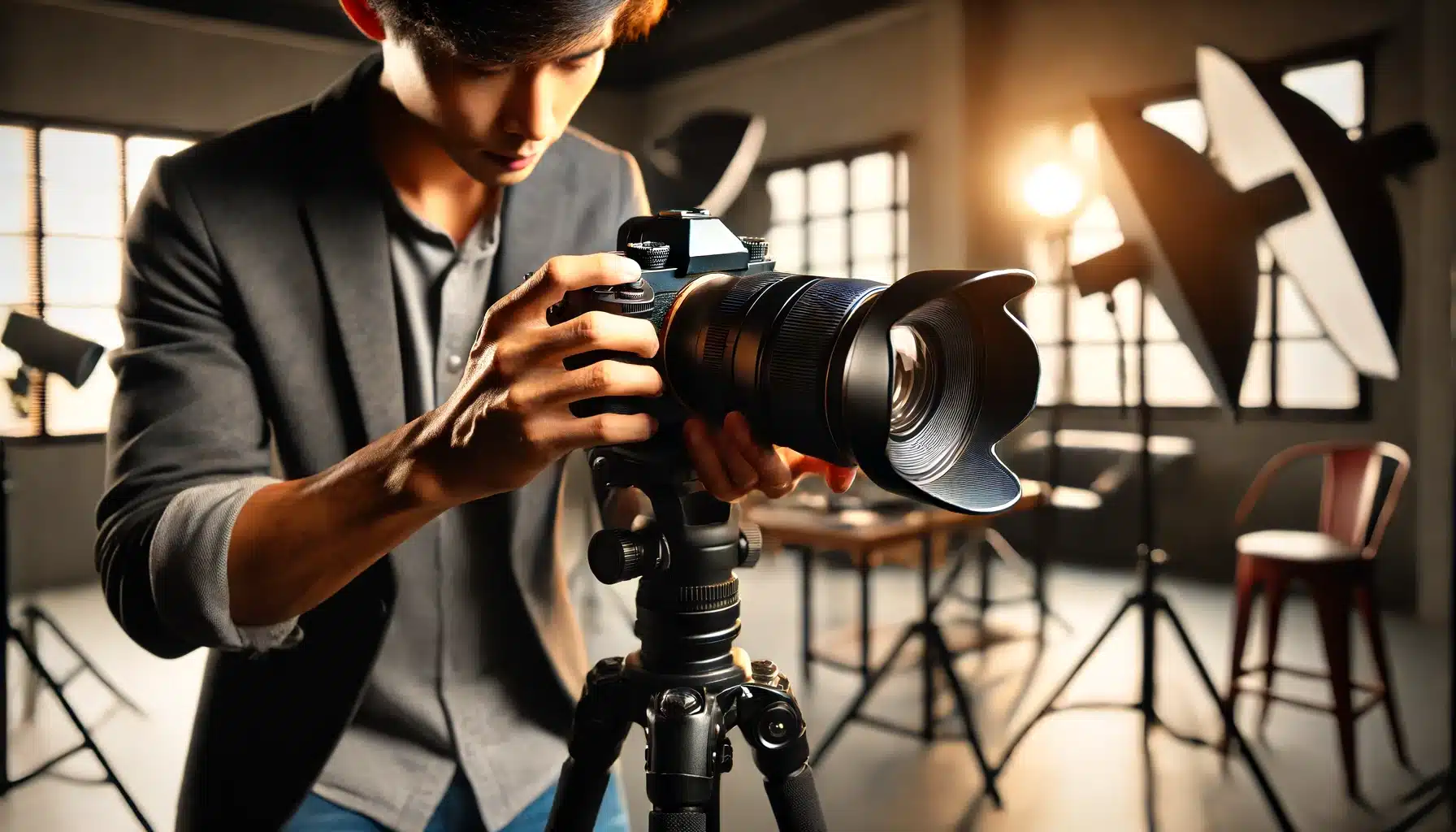
1. Versatility in Various Conditions
One of the main reasons the 35mm is popular is its versatility. Whether you are filming a vast landscape or an intimate scene, this focal length adapts well to different environments. Its ability to handle various types of scenes makes it a go-to for many.
2. Natural Perspective
The 35mm offers a perspective that feels natural and true to life. This focal length closely resembles the way we see the world, making the resulting photos feel immersive and relatable. This natural look is particularly appealing for documentary and lifestyle takes.
3. Ideal for Storytelling
The broader scene captured with a 35mm allows for more elements to be included, which enhances the storytelling aspect of filming. It helps to convey a more complete narrative by including more context, which is especially useful in travel blogging.
4. Practical for Everyday Use
The 35mm is often more compact and convenient for everyday use. This practicality ensures that you can take it along wherever you go, making it easier to be prepared for any photo opportunity. Its ease of use makes it a favorite for casual and professional use alike.
5. Cost-Effective Option
The 35mm is typically more affordable compared to other focal lengths with similar performance. This makes it a cost-effective option for those looking to invest in amazing piece of equipment without breaking the bank. Its affordability, combined with its versatility, makes it an attractive option for many.
6. Enhances Composition and Layering
The 35mm helps make a sense of layering in pictures, making compositions more engaging. By incorporating more elements into the scene, it allows for dynamic and layered compositions. This adds a level of interest and complexity to the pictures, making them stand out.
Using a 35mm or 50mm Lens for Wedding Pictures
Flexibility in Tight Spaces
35mm or 50mm lens is versatile for both indoor and outdoor shoots A 35mm will work wonderfully in confined areas. Its broader field allows for capturing the entire scene, which is beneficial during indoor ceremonies or reception halls. You can document the best couple’s moments without needing excessive distance, ensuring you get all the important details in the environment.
Capturing Group Photographs
The 35mm is also excellent for group photographs, such as family or bridal party shots. Its ability to include more of the scene makes it easier to fit everyone in without having to step too far back. This is especially useful during weddings where space and time can be limited.
Emphasizing Intimacy
The 50mm is great for highlighting intimate moments. Its narrower focus can bring out the emotions and connections between the couple more effectively. This focal length is perfect for close-ups of the couple during the vows or their first dance, providing a beautiful and personal touch to the album.
At Evening Events
Both 35mm and 50mm options often come with wide apertures, which is ideal for dim types of scenarios common at weddings, like evening receptions or dimly lit venues. They allow you to maintain impressive photographs without the need for a flash, preserving the ambiance of the event.
Portraits and Detail Shots
While the 50mm excels in capturing detailed portraits, the 35mm can also be used creatively for more environmental portraits, where the setting plays a significant role in the composition. This versatility allows you to switch between capturing the venue and the people seamlessly.
Versatile Application
Using both 35mm and 50mm during a wedding can provide a comprehensive coverage of the event. The 35mm is perfect for broader scenes and group shots, while the 50mm excels in capturing the intimate and emotional moments, making them both indispensable tools in wedding pictures.

FAQs About 35mm or 40mm Lens
Should I Get a 35 or 50mm Lens?
If you want versatility and the ability to shoot broader scenes, go for the 35mm. For a more focused and intimate look, especially in low-light conditions, the 50mm is ideal. Your decision should depend on your specific needs and the type of scenes you typically capture.
Is 35mm or 50mm Better for Street Photography?
For street photography, the 35mm is often preferred due to its ability to include more context in the scene. It captures the essence of the environment, making it ideal for candid moments. However, the 50mm offers a more focused and natural perspective for highlighting details.
What is a 35mm Lens Good For?
A 35mm is excellent for capturing wide scenes, making it perfect for landscapes and cityscapes. It’s versatile and works well in tight spaces, providing a broader context. This focal length is also ideal for storytelling through your captures.
Is a 35mm or 50mm Lens Better for Landscape Photography?
If you’re capturing landscapes, a 35mm or 50mm lens might offer just the right balance. For landscapes, a 35mm is generally better due to its broader field of capture. It allows you to include more of the scene, making it great for expansive views. However, the 50mm can be used to focus on specific elements within the landscape.
Conclusion
Whether you choose a 35mm or 50mm, your decision should align with your photography style and the specific requirements of your night shoot. Each offers distinct advantages that can enhance your creativity and technical capabilities.
If you’re looking to refine your skills and learn more about photo editing, I highly recommend choose our Photoshop Course and Lightroom Course. These Photoshop and Lightroom courses are designed to help you master the tools needed to take your photography to the next level.
Have a nice photoshoot!
Learn more about Photography Equipment:

